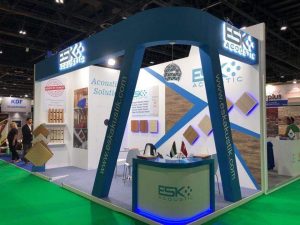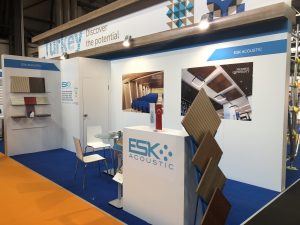For sound insulation, materials suitable for the area to be insulated should be selected. Sound insulation prevents the sounds coming from outside and prevents the sounds in the environment from spreading outside. According to the new zoning law, sound insulation has become a mandatory application in the interior and exterior of all apartments built.
Materials Used in Sound Insulation
The materials used for sound insulation are selected according to the structural characteristics of the area to be insulated. If the floor area of the place where sound insulation will be made, the material used is rubber, cork mat under screed floor rubber or PVC rubber-based carpets.
The materials used for the insulation process on the walls vary according to the intensity of the sound in the environment. Pyramid, egg or melamine insulation sponges are generally preferred for low noise levels. If the ambient sound is high, insulation is made using rebonded bondex sponges, also known as foam pan.
Sponges with barriers should be used as insulation material in areas where sound insulation will be made, studio, concert area, movie theater and home theater hall where the sound should be spread and kept inside.
How to Do Neighbor Wall Sound Insulation?
Neighboring wall sound insulation is applied especially in flats where many people live adjacent or overhead. Neighboring wall sound insulation is achieved by sticking sponge on the wall that is used in common. In order to carry out the process, after leaving an air gap of approximately 5 cm width with the steel profile, the entire surface is covered with drywall. After the process, the sound insulation material is mounted on the plasterboard using special adhesives and the insulation material is covered once again using drywall.
This application alone prevents sound to a great extent. The two-sided sound insulation process prevents mutual sound transmission up to 90%. The area where the application will be performed must be flat and clean. After the liquid-based adhesive used for the application is applied to the wall, the insulation material is mounted quickly. Adhesives used for insulation dry quickly. If the sound intensity of the environment is high, the thickness of the insulation sponge can be kept a little more.
How to Sound Insulation in Construction?
Sound insulation in constructions is made to prevent sounds from spreading more easily with the new generation of building materials that are getting lighter. Insulated areas in construction are as follows:
- Under screed or parquet to prevent air and impact sounds occurring between floors,
- Common walls of flats on the same floor,
- Roof and window edges against the noise that may come from outside,
- Ventilation holes in bathrooms and toilets,
- Insulation of waste water and installation pipes,
- Building corridors and car park ceilings,
- To prevent the noise of the devices that emit vibration and noise in the booster, generator, elevator rooms and heating-cooling installation floors in mechanical rooms,
- Sound insulation applications are preferred at the entrance of indoor or meeting rooms.
What Are The Insulation Materials Used In Construction?
The materials preferred in construction insulation are selected from vibration and shock absorbing mattresses. These products are used to prevent sounds caused by heel and walking. The insulation mats selected according to the flooring material and type used in construction are laid freely under the parquets. Sound insulation made from the floor in constructions does not prevent the operation of underfloor heating systems. When using insulation mattresses, care should be taken not to leave any gaps between them. The parts discussed in construction insulation are:
- Flooring between floors,
- Between parquet and screed,
- Social and common areas such as gym and Turkish bath,
- Foundation and bearing columns and walls of the building.







